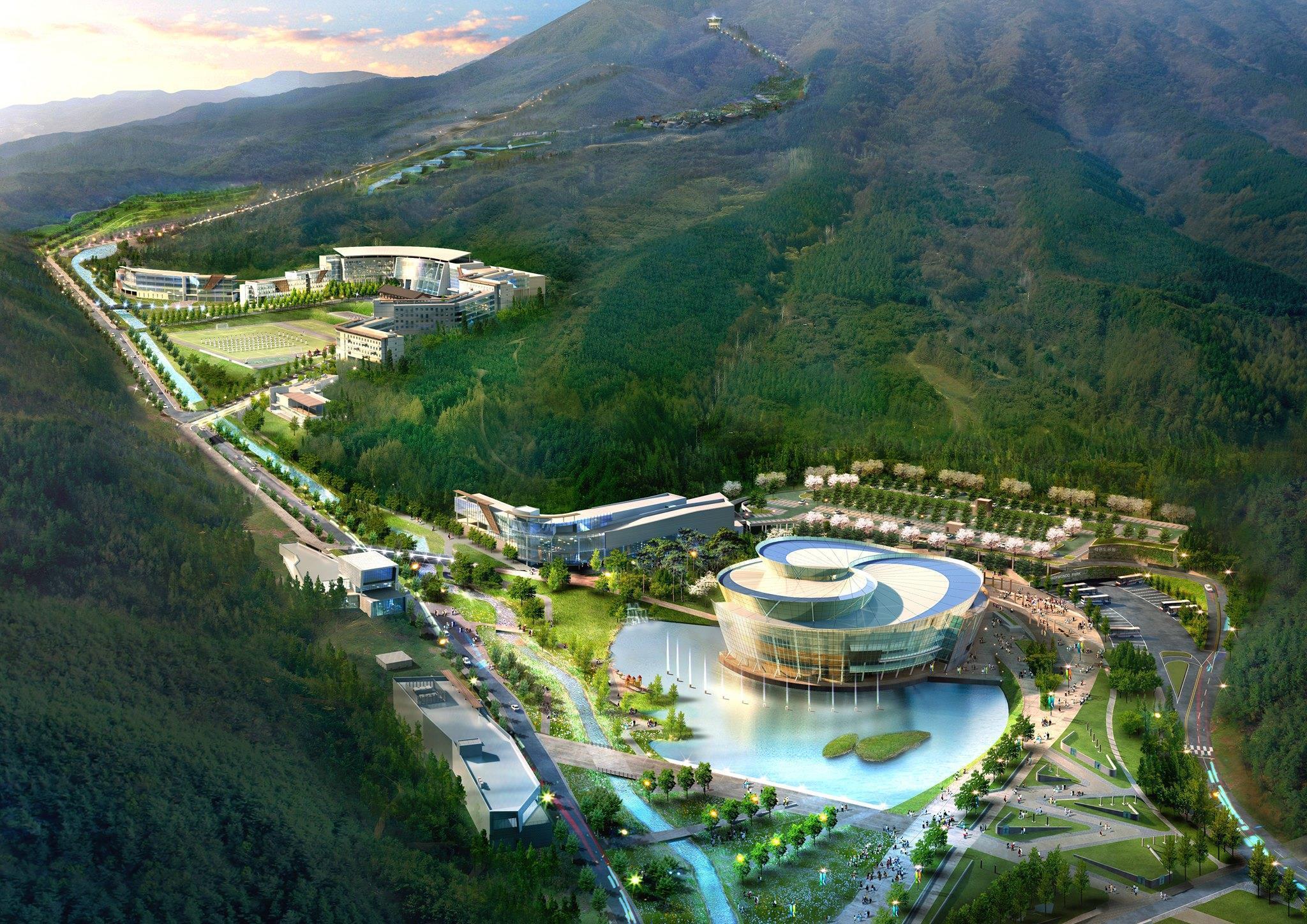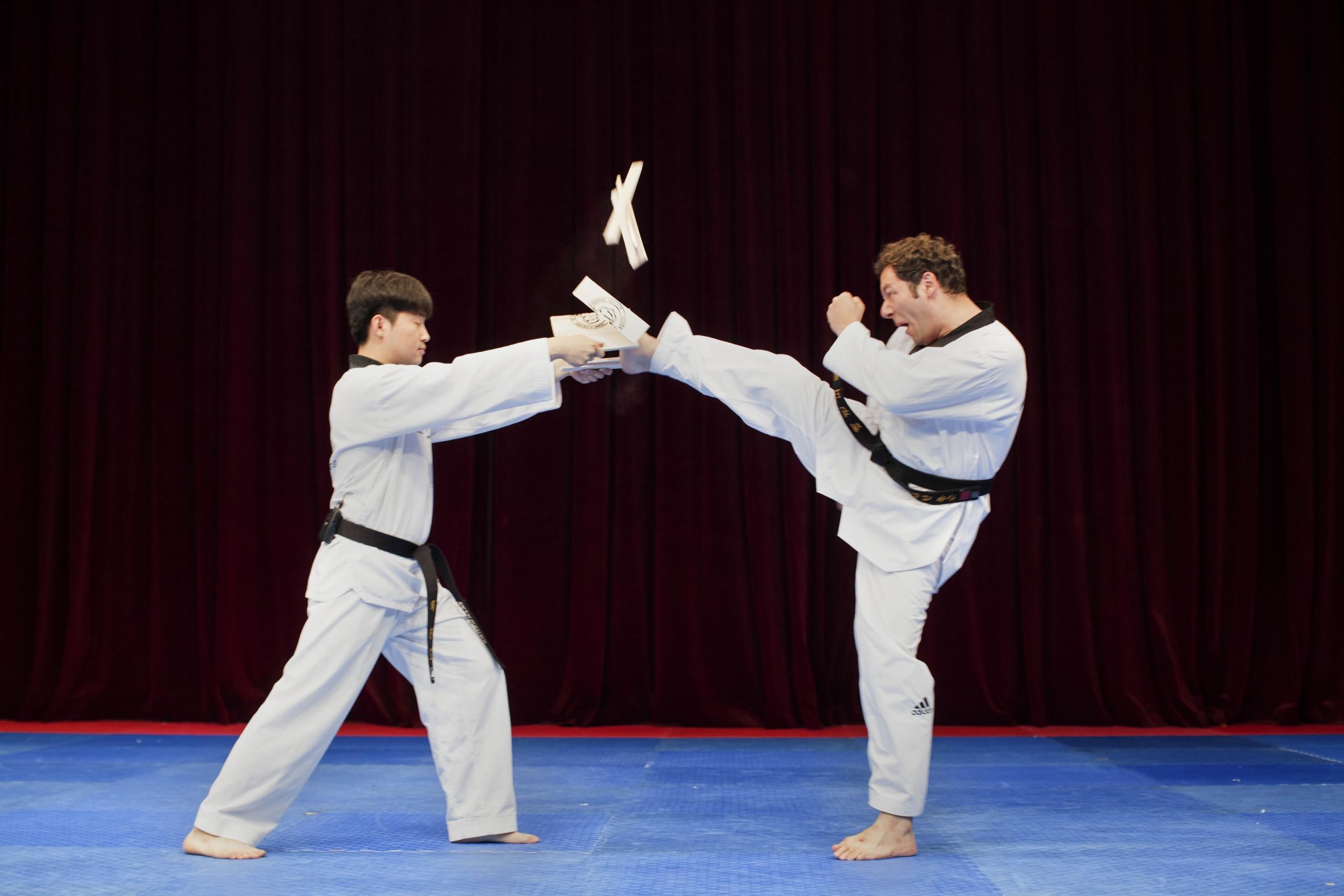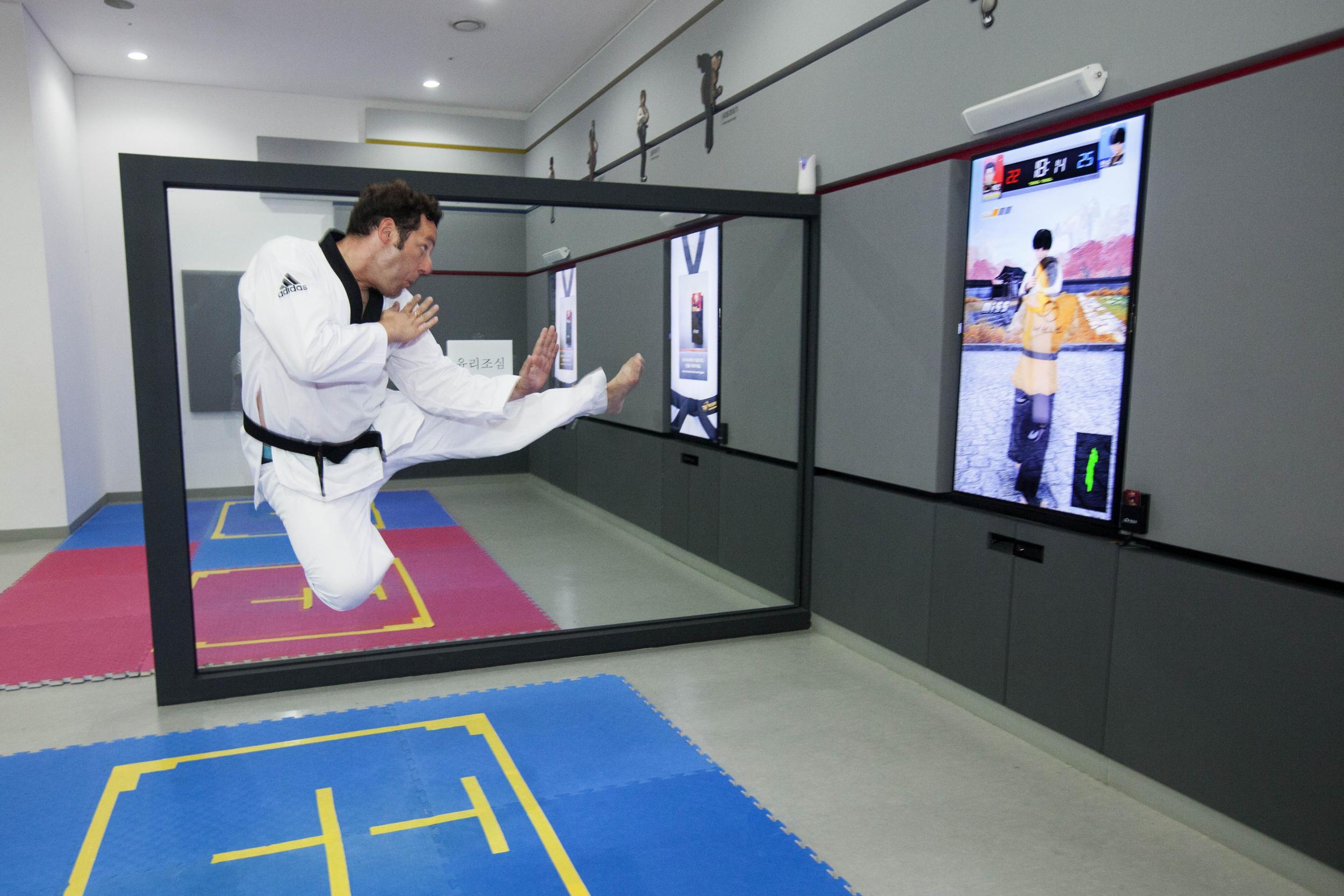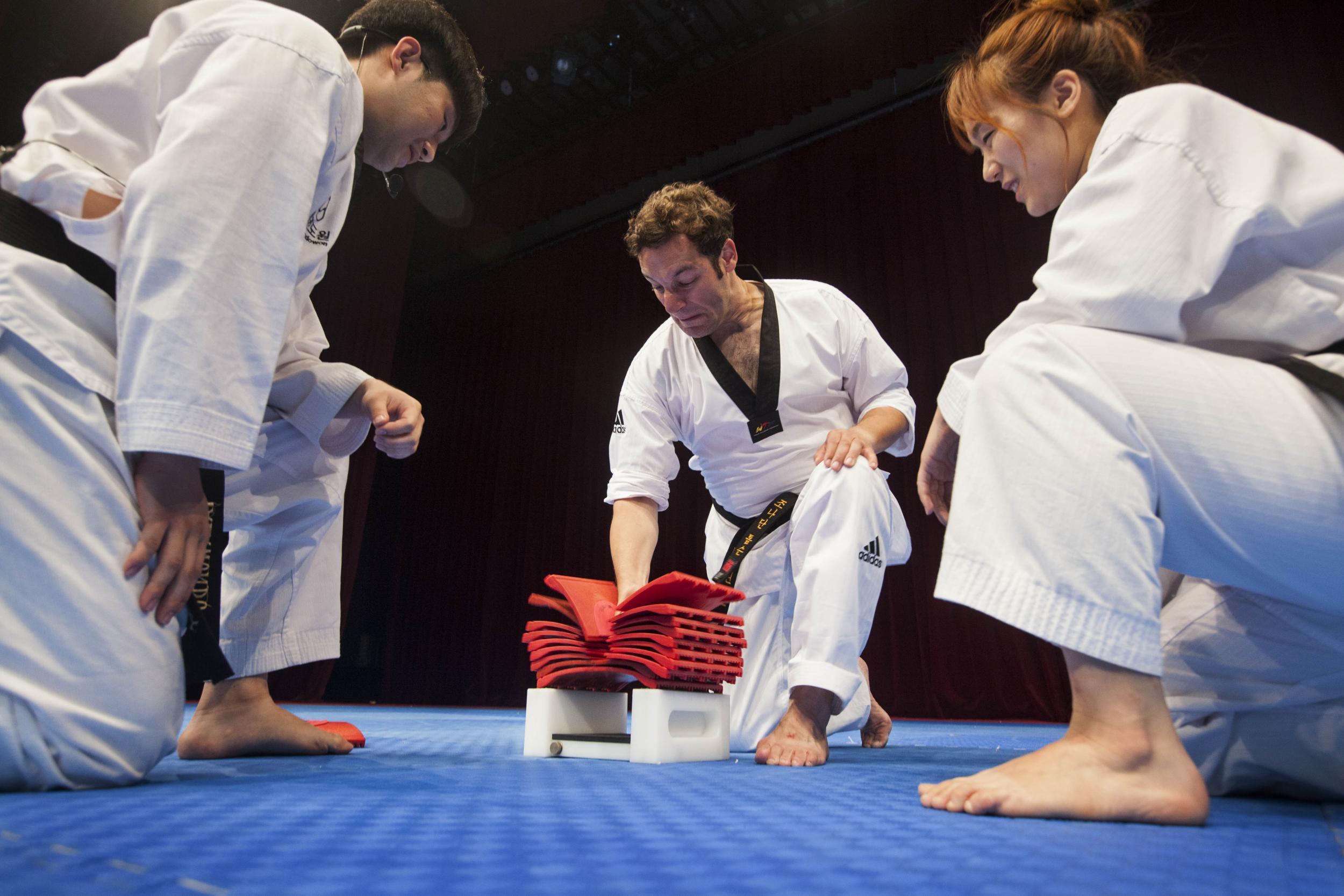Learn taekwondo: inside South Korea’s temple to its national sport
With Team GB set to do well in taekwondo at Rio 2016, our writer headed to the home of the sport, South Korea, to visit its giant new martial arts-themed attraction
Your support helps us to tell the story
From reproductive rights to climate change to Big Tech, The Independent is on the ground when the story is developing. Whether it's investigating the financials of Elon Musk's pro-Trump PAC or producing our latest documentary, 'The A Word', which shines a light on the American women fighting for reproductive rights, we know how important it is to parse out the facts from the messaging.
At such a critical moment in US history, we need reporters on the ground. Your donation allows us to keep sending journalists to speak to both sides of the story.
The Independent is trusted by Americans across the entire political spectrum. And unlike many other quality news outlets, we choose not to lock Americans out of our reporting and analysis with paywalls. We believe quality journalism should be available to everyone, paid for by those who can afford it.
Your support makes all the difference.At Taekwondowon, South Korea’s state-of-the-art temple to taekwondo, they vow visitors will be able to chop a block of wood in half with their bare hands after only one lesson. This is, after all, a place very seriously dedicated to the country’s national sport: spread over a whopping nine valleys, the spanking new $228 million complex is 10 times bigger than Seoul’s World Cup stadium and 70 per cent the size of New York’s Central Park.
My own attempt at chopping the block doesn’t start well. Within a few minutes of my first session in the martial art, my belt rather embarrassingly drops to the floor and the loose white trousers of my “dobok” very nearly follow. My instructor might not speak English, but judging by the howls of laughter, he obviously appreciates slapstick humour.
Luckily, I’m not the only foreigner embarrassing myself. Unveiled in 2014 as an international home for the practices and principles of taekwondo – a sort of ‘Taekwondo HQ’ – Taekwondowon has put the small town of Muju, equidistant from South Korea’s two major cities (Seoul to the north and Busan to the south) firmly on the tourist map. Taekwondowon saw upwards of 20,000 foreign visitors last year, as well as hundreds of thousands of South Koreans who came here to further their own dedication to the martial art.
Keeping guests entertained in the complex is an enormous competition arena, as well as a three-storey museum, an interactive “Experience Centre”, a Roman amphitheatre-style outdoor performance space, an observatory, a sculpture garden, accommodation, restaurants and a meditation area handily located in front of a natural waterfall.

Little wonder it’s been nicknamed “Taekwondo Town”, due to its sheer size. In reality, it feels somewhere between a university campus and an Olympic village. But there’s only one sport anybody’s interested in here. And it’s not just the South Koreans with a keen eye on taekwondo, either.
As all eyes turn to Rio, taekwondo is expected to be one of Team GB’s strongest disciplines. Alongside Lutalo Muhammad, a bronze medallist at London 2012, is Jade Jones – who will be defending her own gold medal from the same Games. Not to mention Bianca Walkden, the current European and world champion, who is eager to add an Olympic title to her already impressive haul.
This summer’s Games in Brazil will also be the first proper test of what the South Koreans have built here in Muju, and what they hope to gain from it. As taekwondo master, An Byeong Cheol, tells me: “In recent years, some of the best Korean taekwondo coaches have gone abroad to teach, which means a lot of other countries, like the UK, the US and Turkey have caught up with us.
“It’s a force for good, for positivity in the world, but now others are on the same level as us, so it’s become considerably more competitive.”

Just how competitive is clear when you consider An and his colleagues start training children here from the age of five, while the government has introduced an official taekwondo day, just in case people weren’t practising hard enough. Taekwondo also forms part of compulsory military service here, as the South Koreans implement their strategy to win back dominance of their national sport.
Before Taekwondowon, Muju was known largely for its waterfalls and annual firefly festival. The town was selected primarily for being two-and-a-half hours’ drive from both Seoul and Busan, and is also at the centre of a triumvirate of important towns in the core of the country: Daejeon, Jeonju and Daegu. Essentially, they’ve built a sanctuary to a sport that lies very close to the country’s spiritual heart right at its geographical one.

It also makes the perfect stop-off on my week-long road trip from Busan to Seoul. I’ve been surprised by just how lush, forested and mountainous South Korea is – and the area around Muju is no exception. The drive into Taekwondowon in our trusty Kia Niro reveals some monumental views, more reminiscent of Northwest America than Southeast Asia.
Taekwondo Town appears long before we reach it, the glittering observatory at its crest visible for miles around. Over its nine valleys, the centre has been designed as an ascending landscaped space, with themed bridges embodying each level of taekwondo advancement. As we wander through the grounds, stopping to explore the museum (and take on virtual baddies, Street Fighter-style, in the Experience Centre), it becomes apparent just how serious an undertaking this is – and just how serious South Koreans are about the sport they invented and named back in 1955.
Nowhere is that more apparent than in the performance auditorium itself, where myself and around 20 other eager amateurs from around the world are put through our paces on a stage eerily reminiscent of the X-Factor. After learning the basic kicks, stances and punches (“taekwondo”, literally translated, means “the art of foot and fist”), the blocks of wood come out. The secret to breaking them, it seems, is a combination of focus, breathing and connecting with the correct part of the fist (the lower knuckle) or the foot (the very top), and following through afterwards. After a number of dummy runs with hinged plastic tiles, a piece of wood is held in front of me.

“Three-two-one-smash,” says my instructor in broken English. I take a deep breath, centre my balance and then – with a rather terrifying crack – the lower knuckles of my right fist go straight through the wood. I look at the shattered pieces on the mat beneath me in disbelief, wondering if it’s some kind of trick. But my stinging hand and the splinters on the floor tell a different story. The power of taekwondo, it seems, is not to be underestimated.
Travel essentials
Getting there
Muju’s closest airport is Seoul Incheon International (a 2.5-hour drive away), served from Heathrow by British Airways, Asiana and Korean Air.
Staying there
Taekwondowon offers double occupancy accommodation on site, without breakfast, for 104,500 South Korean Won (£72).
Visiting there
General entry to Taekwondowon costs 4,000 Won (£2.75). Taekwondo demonstrations and lessons are free, and take place twice daily, at 11am and 2pm, but you will need to book in advance. Tickets for the Experience Centre cost from 6,000 Won (£4.10) .
More information
Jonathan Thompson visited Muju as part of a road trip across South Korea in the new Kia Niro. For more see kia-buzz.com.

Join our commenting forum
Join thought-provoking conversations, follow other Independent readers and see their replies
Comments